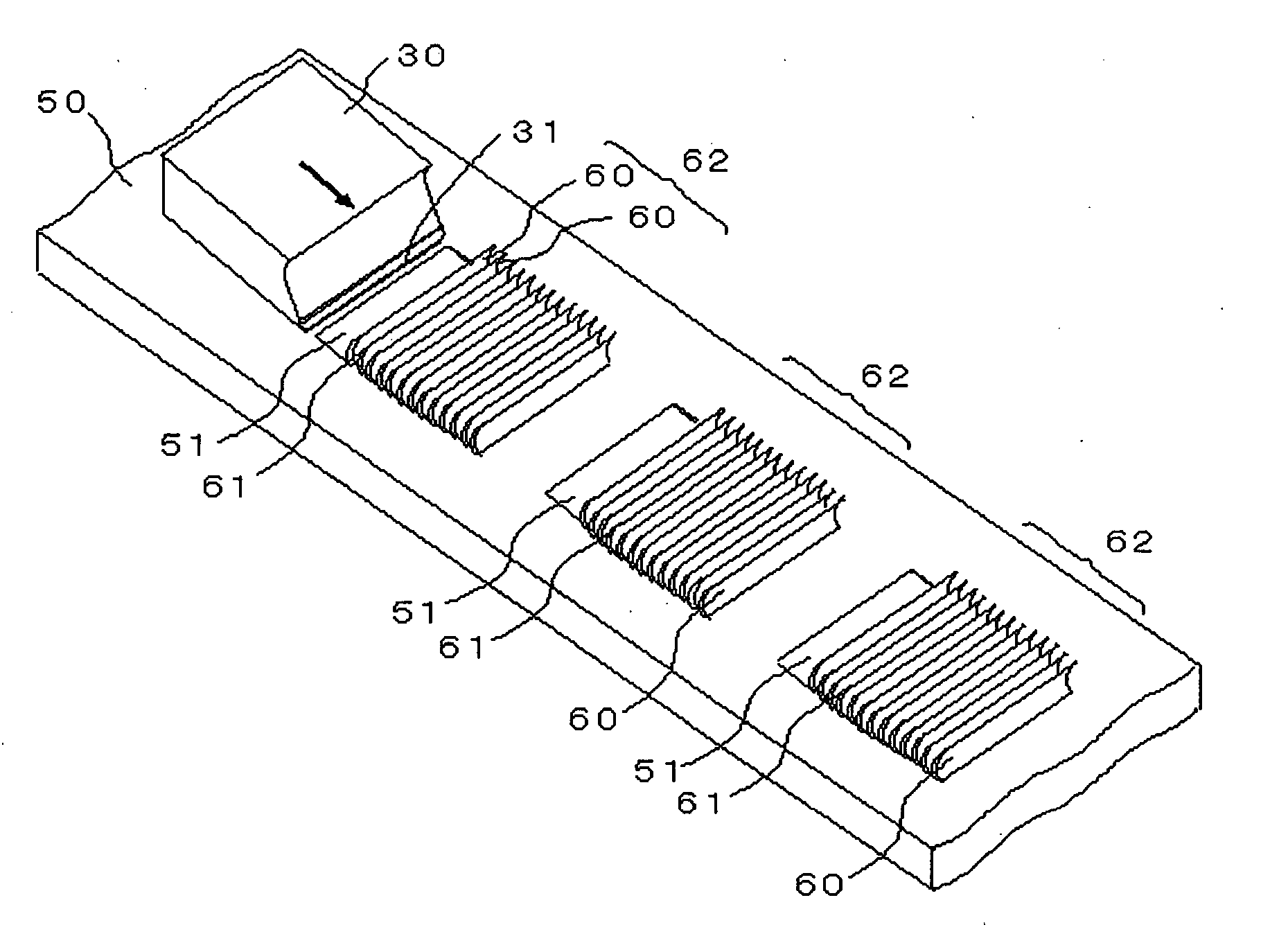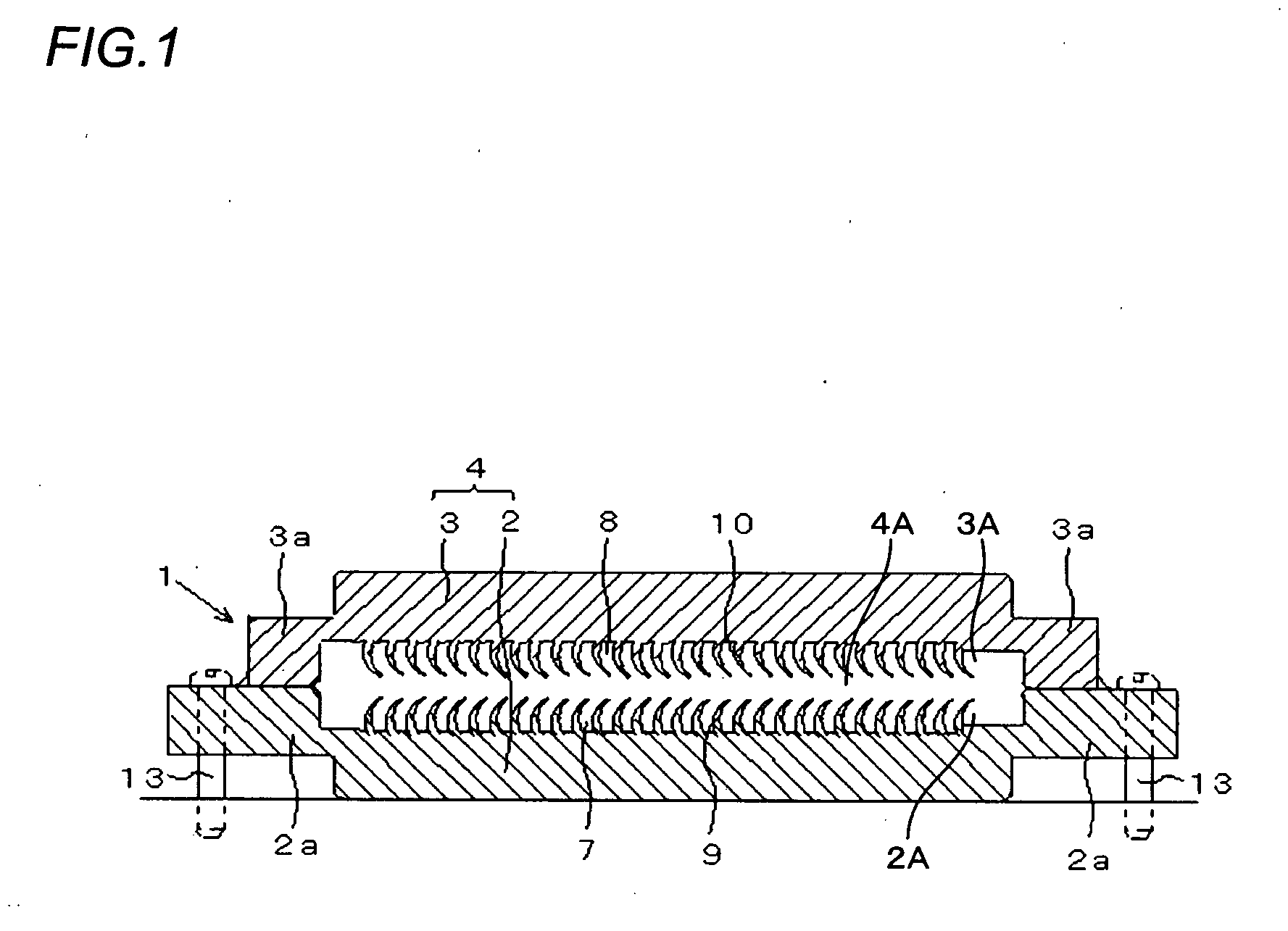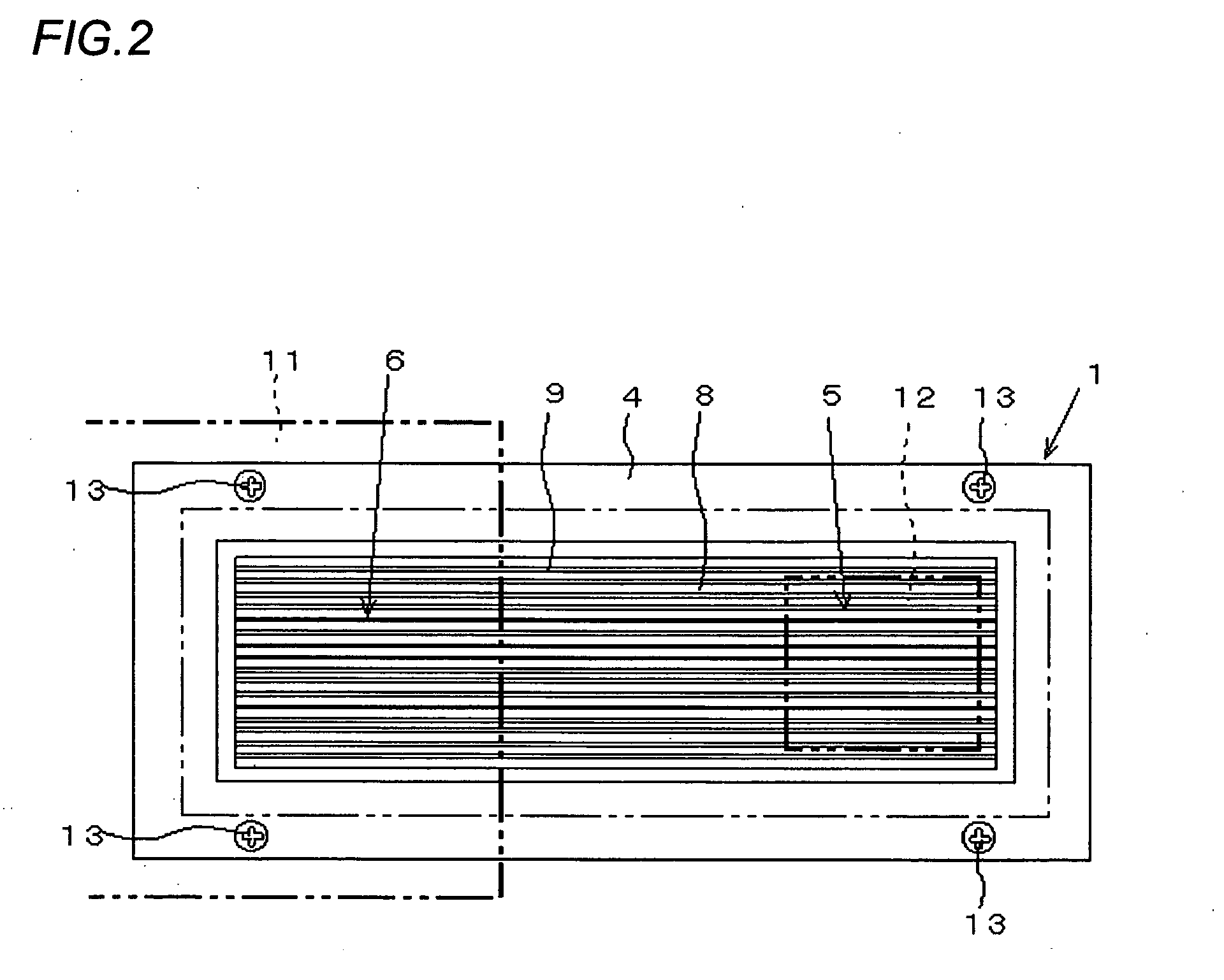Plate type heat exchanger and method of manufacturing the same
a heat exchanger and plate type technology, applied in the field of plate type heat exchangers, can solve the problems of increasing the size and functionality of computer devices, increasing the difficulty of adjusting the temperature of the heat exchanger, so as to achieve the effect of bringing the heat easily and reliably
- Summary
- Abstract
- Description
- Claims
- Application Information
AI Technical Summary
Benefits of technology
Problems solved by technology
Method used
Image
Examples
embodiment 1
(Modifications of Embodiment 1)
[0132] A hoop-type metal plate made of aluminum, an aluminum alloy, copper, a copper alloy, stainless, steel, or the like can be used instead of the metal plate 20. Specifically, a hoop-type metal plate 50 is mounted while being positioned on a die (not shown) as shown in FIG. 9. One surface of the hoop-type metal plate 50 is then carved out by the blade 31 of the above-described carving tool 30 to form fins 60 of a specific height in an upright manner.
[0133] The hoop-type metal plate 50 is then moved by a specific pitch and is positioned and fixed in place on the die. After the blade 31 of the carving tool 30 is brought into contact at a position that is upstream of the machined surface 51 and that produces a specific carving margin, the carving tool 30 is moved at a specific angle towards the other side of the hoop-type metal plate 50 to a position that produces a specific pitch, and carves out the hoop-type metal plate 50 to form the next thin fin ...
embodiment 2
(Modifications of Embodiment 2)
[0168]FIG. 21 depicts a modification of the communication hole for communicating the hollow part 104A of the plate-type heat pipe 101 with the exterior. In the plate-type heat pipe 101(1) depicted in FIG. 21(A), a concave groove 115 (communication groove) is formed in the connected surface (joined surface) of the bottom container 102 formed on the outer edge of the sealing member 103(1), and a communication hole 116 is formed in the concave groove 115 by joining the sealing member 103(1) with the outer edge portion of the bottom container 102. The concave groove 115 can be formed when the sealing member 103 is press-worked. A concave groove 115 may also be formed near each of two corners at opposite ends of a diagonal on the sealing member 103. Furthermore, the concave groove 115 may be formed on the side of the bottom container 102, or a groove may be formed on both of the outer edge portions of the sealing member 103(1) and the bottom container 102. ...
PUM
 Login to View More
Login to View More Abstract
Description
Claims
Application Information
 Login to View More
Login to View More - R&D
- Intellectual Property
- Life Sciences
- Materials
- Tech Scout
- Unparalleled Data Quality
- Higher Quality Content
- 60% Fewer Hallucinations
Browse by: Latest US Patents, China's latest patents, Technical Efficacy Thesaurus, Application Domain, Technology Topic, Popular Technical Reports.
© 2025 PatSnap. All rights reserved.Legal|Privacy policy|Modern Slavery Act Transparency Statement|Sitemap|About US| Contact US: help@patsnap.com



